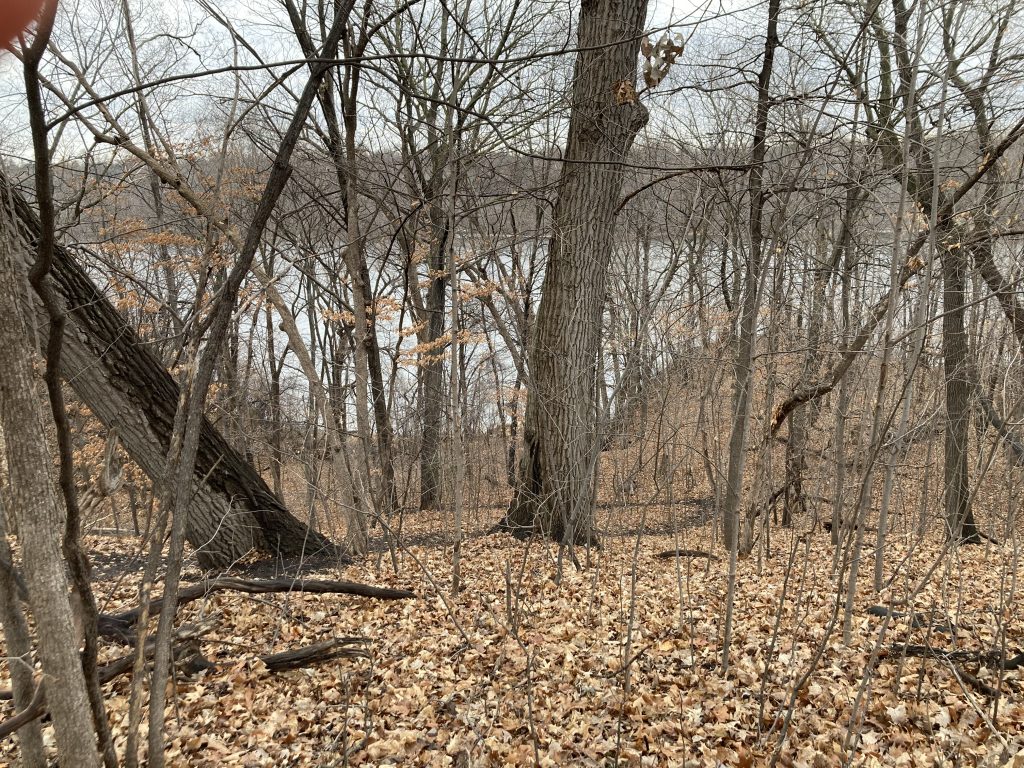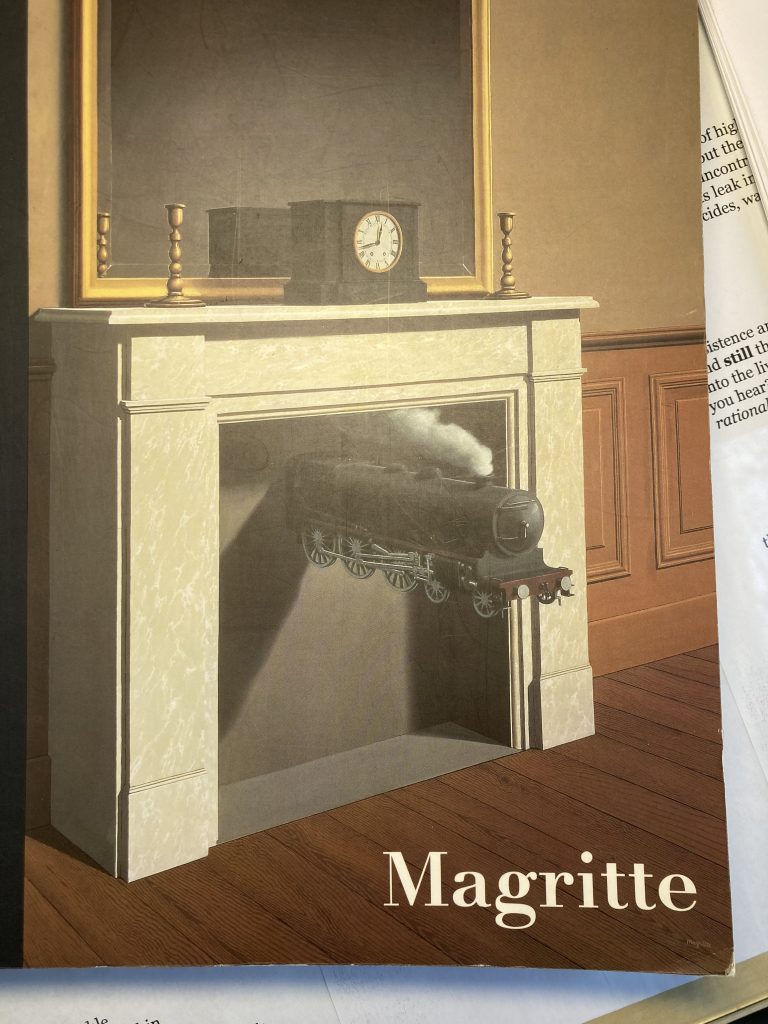bike: 16 minutes
run: 2.3 miles
basement
outside: 54 degrees / rain, wind
Before I started writing this but after my workout, I got up from my chair and my right kneecap missed the groove and slipped out hard. So hard that I uncontrollably yelled, “God Dammit!” No pain and it went right back in, or I was able to pop it back in. But it was shocking — mentally and physically. My LCL or meniscus seem as reticent to walk as my brain does — a strange sentence to write: can you imagine ligaments feeling something independent of the brain? Now I’m nervous about when this might happen again. As is usually the case, I had absolutely no warning. I didn’t do anything abrupt or dramatic; I just stood up and turned. I’ll get over it in a few minutes and stop imagining different scenarios in my head when the kneecap suddenly slides and it hurts and I can’t get it back into place. For now, I’ll breathe and attempt to remember how happy I was to work out before my subluxation.
It’s raining today, and there’s a wind advisory. Decided to go to the basement and do a bike run combo. After pumping up the air in my tire — it is still leaking air even though I got new tires last spring — I found the SuperLeague e-tri championships. I’ve been watching SuperLeague while biking in the basement since it started — when? 2018? Then I ran for 22.5 minutes while I listened to a “If Books Could Kill” podcast and then a playlist.
I don’t remember thinking about much except for that I had to go to the bathroom. Scott and I have new euphemism for it: unfinished business. Anything else? I recall looking straight ahead at the water heater and I remember feeling like a badass when I increased my cadence to try and match the bikers I was watching.
Here’s a victory: I didn’t think at all about the text exchange I had with FWA about what “fun” or “interesting” or “non-music” classes he could take to fill up his pretty bare schedule for senior year. No double major or minors for him. Just music, which he’s very good at, but still . . . . I’m trying to let him figure out his own way, but it’s so hard to watch him make choices that seem foolish or short-sighted. Sigh. Parenting is hard; backing off is hard; trusting is hard. When I worry too much, I’ll go back and watch his recital from Sunday and remember how proud I am of him and that he can (and is) creating an exciting future for himself.
before the bike and run
Yesterday was the poet, Tomas Tranströmer’s birthday. He would have been 92. I’ve posted a few poems from him on here before. While looking for “air” poems, I found this one. It’s an ekphrastic! Those ekphrastic poems keep appearing. Are they trying to encourage me to keep working on my ekphrastic project? I’d like to believe so. Anyway, here’s the Tranströmer poem I found:
Vermeer / Tomas Tranströmer
translated by Robert Bly
It’s not a sheltered world. The noise begins over there, on the other side of the wall
where the alehouse is
with its laughter and quarrels, its rows of teeth, its tears, its chiming of clocks,
and the psychotic brother-in-law, the murderer, in whose presence
everyone feels fear.
The huge explosion and the emergency crew arriving late,
boats showing off on the canals, money slipping down into pockets
— the wrong man’s —
ultimatum piled on the ultimatum,
widemouthed red flowers who sweat reminds us of approaching war.
And then straight through the wall — from there — straight into the airy studio
in the seconds that have got permission to live for centuries.
Paintings that choose the name: “The Music Lesson”
or ” A Woman in Blue Reading a Letter.”
She is eight months pregnant, two hearts beating inside her.
The wall behind her holds a crinkly map of Terra Incognita.
Just breathe. An unidentifiable blue fabric has been tacked to the chairs.
Gold-headed tacks flew in with astronomical speed
and stopped smack there
as if there had always been stillness and nothing else.
The ears experience a buzz, perhaps it’s depth or perhaps height.
It’s the pressure from the other side of the wall,
the pressure that makes each fact float
and makes the brushstroke firm.
Passing through walls hurts human beings, they get sick from it,
but we have no choice.
It’s all one world. Now to the walls.
The walls are a part of you.
One either knows that, or one doesn’t; but it’s the same for everyone
except for small children. There aren’t any walls for them.
The airy sky has taken its place leaning against the wall.
It is like a prayer to what is empty.
And what is empty turns its face to us
and whispers:
“I am not empty, I am open.”
I love this poem and how it imagines the world outside of the painting and its relationship to the world inside of it. Starting with the first line: It’s not a sheltered world. The noise begins over there, on the other side of the wall . . . . That alehouse, that psychotic brother-in-law. The explosion, the money being dropped into the wrong man’s pocket. Then the airy studio and the seconds that have got permission to live for centuries — the differences between what we notice and try to remember and what we ignore or try to forget — what is worthy of attention, a painting, and what is not.
What is worth noticing in a poem describing a painting, and what is not? The Vermeer painting the poem is titled, “Woman in Blue Reading a Letter,” but there’s no mention of the letter or the woman’s expression, and the blue described by Tranströmer is the blue fabric on the chair, not of the woman’s jacket.
This poem is about the wall, the other side of the wall, the pressure that the other side creates, pressing in on us. The wall between our interior and the exterior world. The edge of the void, the abyss. All of this is kind of, almost, not quite making sense to me. I should spend some more time rereading Tom Sleigh’s“Too Much of the Air: Tomas Tranströmer“.
I’m struck by the last lines:
The airy sky has taken its place leaning against the wall.
It is like a prayer to what is empty.
And what is empty turns its face to us
and whispers:
‘I am not empty, I am open.’
I’m thinking of the gorge here and the limestone walls that contain it and how it is both empty of land/rock and filled with air and openness. To think of the void — the unknowable, unsayable, mystery — as both frightening (emptiness, nothingness) and inviting (openness, possibility).
Yesterday I talked about believing in the unseen. Today I’m thinking about what it could mean to be believe in the unseeable. Unseen could mean, not-yet-seen or unnoticed, but unseeable suggests that seeing is never possible.
Before writing this, I was reviewing an old log entry from April 16, 2022. In it, I discuss Elisa Gabbert’s article about poetry and the Void.
They [poets] write in the line, in the company of the void. That changes how you write — and more profoundly, how you think, and even how you are, your mode of being. When you write in the line, there is always an awareness of the mystery, of what is left out. This is why, I suppose, poems can be so confounding. Empty space on the page, that absence of language, provides no clues. But it doesn’t communicate nothing — rather, it communicates nothing. It speaks void, it telegraphs mystery.
By “mystery” I don’t mean metaphor or disguise. Poetry doesn’t, or shouldn’t, achieve mystery only by hiding the known, or translating the known into other, less familiar language. The mystery is unknowing, the unknown — as in Jennifer Huang’s “Departure”: “The things I don’t know have stayed/In this home.” The mystery is the missing mountain in Shane McCrae’s “The Butterflies the Mountain and the Lake”:
the / Butterflies monarch butterflies huge swarms they
Migrate and as they migrate south as they
Cross Lake Superior instead of flyingSouth straight across they fly
South over the water then fly east
still over the water then fly south again / And now
biologists believe they turn to avoid a mountain
That disappeared millennia ago.The missing mountain is still there.
The Shape of a Void / Elisa Gabbert
This past weekend, Scott and I watched the 2 part documentary about Steve Martin, STEVE! I really enjoyed it. I remember responding to this idea offered by one of Steve Martin’s artist friends:
How to close the void. I think that’s the nature and the drive in art, it comes from that deep awareness of that void.
STEVE! — 53:30, part 2
I agree with the second part of that statement, about the deep awareness of the void, but not the first — at least how it’s worded. It’s not to close the void, but to navigate it, develop a relationship to it, engage with it, learn how to live with it. I mentioned this to Scott and he argued that the void in this quotation is not the unknown or mystery, but something else. Maybe lack or longing? A desire to be whole? To have/feel meaning? I still don’t like the word close. Can you ever close the void? Tranströmer doesn’t think so; it’s always on the other side of that wall. Even with a wall between you and it, you feel its pressure in your ears. And it’s this pressure that drives/shapes/enables your art — that makes each fact float/and makes the brushstroke firm.
A final (for now) word on this ekphrastic poem: I like how Tranströmer is responding to the work of art in this poem, how we uses the image to reflect on the abyss/void, history, interior/exterior, and why we make art. I want to think about it some more and try to write something for my “How to See” project inspired by his approach.

